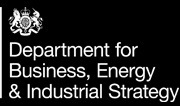
NAA Member News: University of Liverpool – Digitalisation of Operations and Supply Chain Management
Digitalisation may be defined as a process to utilise digital technologies to collect relevant data, extract knowledge from the data, and make use of the knowledge to support decision-making.
Nearly every business organisation recognises the power of data and is gradually treating it as a strategic asset, however, most of them still struggle to harness it. The research conducted by the Society of Motor Manufacturers and Traders in 2017 indicated that the digitalisation of the UK automotive industry was at a very early stage and digital connections with suppliers and customers were even rarer.
In the operations and supply chain context, digitalisation faces a number of challenges. Internally, the major challenges include: (i) the technical implementations for data collection, processing, and analytics; and (ii) the cross-functional expert teams with relevant knowledge and skills. Externally, the major challenges include (i) relationships with supply chain members for information sharing and coordinated management to break supply chain silos; and (ii) environmental conditions on data compatibility, cyber security, and legal regulations. Among these challenges, acquiring accurate, all-around, and real-time data is fundamental. In practice, data are often scattered and heterogeneous. The collection and pre-processing of structured, semi-structured, and unstructured data simultaneously is regarded as the most time-consuming task in a data analytics project. On the other hand, the most important step is to turn the data into actionable insights to improve operations efficiency and productivity.
Many businesses and organisations tend to be risk-averse and are hesitating to implement digitalisation in fear of the high cost-benefit ratio and the uncertainty of its impact on daily operations and cash flows. Nevertheless, digitalisation is a trending topic. It is believed that digitalisation could offer great benefits for operations and the supply chain, such as increased availability of information, improved visibility and transparency, and optimisation of operations and logistics processes. We think the digitalisation of supply chains is likely to take the continuous improvement approach. Its implementation may be facilitated by two categories of measures.
The first category includes: (i) committing the joint effort from industry, government, and universities to support the development of knowledge and skills on digitalisation; (ii) segmenting the organisation’s products and supply chains so that the most suitable digitalisation strategy could be developed for each type of product and supply chain; and (iii) developing easy-to-implement digitalisation initiatives with measurable cost-benefit ratio, including the evaluation of the implications of incorrect predictions from data analytics. The second category includes: (i) seeking vertical collaboration along the supply chain for data visibility and inter-operability; (ii) establishing horizontal collaboration for industry-wide standardisation such as data formats and platforms; and (iii) providing support incentives and legal regulations by governments and international bodies.
Overall, digitalisation of operations and supply chains is underway, but it faces a lot of challenges both internally and externally. The collaborative effort from industry, government, and universities may help develop less risky digitalisation initiatives as the first step of its implementation. The full-scale implementation of digitalisation requires collaborations and agreements among stakeholders within and across supply chains. Due to the global nature of the automotive industry, its digitalisation is also highly related to the digitalisation of the logistics sectors such as the container shipping industry, which has severely plagued the global supply chains over the past two years.
Professor Dongping Song
Professor in Supply Chain Management, University of Liverpool Management School





